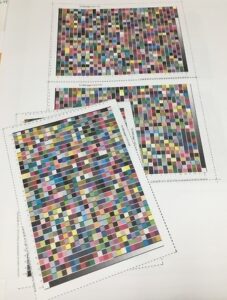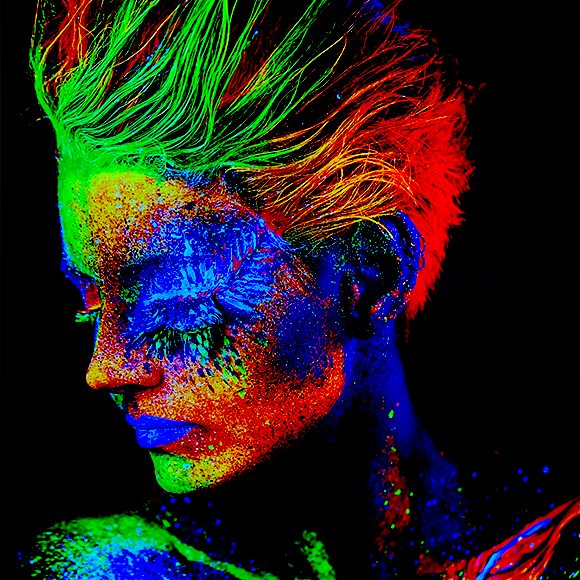Have you ever had an issue where you print a full-color image and it comes out looking nothing like it did on screen? Perhaps it’s too dark, too faded, not red enough, or the colors are blending when they shouldn’t. This is likely a color management problem.
There’s a big difference between what we can see and what we can produce. The human eye can see millions of colors, but an offset press can only print thousands. Therefore, it’s imperative to have a science behind hitting the target of what we can print.
What is Color Management?
Color management means ensuring the color representation looks the same across all devices like computers screens and printed paper. In order to accurately match all the colors, you first have to target the color gray. The science behind color management is based on gray balance.
Printers use four different inks to reproduce color: cyan, magenta, yellow, and black. As we print cyan, magenta, and yellow on top of each other, the resulting color needs to be a neutral gray that matches a 50% shade of black. Once this is achieved, all the other colors can fall into range on a measurable scale by adjusting that balance.
Wes Frentrop, prepress technician at NextPage, said, “Color is light, nothing more. It’s reflections of different parts of the color spectrum and if you can’t at least control the science part of it, then there’s no way a craftsman can really achieve it.”

Color Test Bar
How We Do It
When NextPage receives a file from a client for a direct mail or large format piece, we create a proof of it on paper to show the client for approval and make any necessary changes. If, for instance, the client says the apple isn’t red enough, we adjust the color balance until it is. The proof also shows us each individual color on a test bar.
Next, we run the proof through our ColorPath system to verify that our printers can accurately reproduce every color within our GRACoL industry standards. After that, we can calibrate the printers to target the neutral gray so it can then measure the rest of the colors we want. Finally, out comes the finished product in all its full-color glory.
Everyone sees color differently. There are several different factors that affect how colors appear depending on where you’re looking. Light plays a huge role in viewing colors because every color absorbs and reflects light in a certain way. Pat Maasen, planning manager at NextPage, says daylight is the standard for colors, which is why NextPage uses 5,000-kelvin bulbs across our entire production floor to consistently simulate daylight.
The substrate can also change the appearance of the print whether it’s plastic, paper, or plaster. We use the same type of paper in creating proofs so they all look the same, but the material used in the final product may require adjustments to hit the target color scheme.
“The goal is to start perfect and then we may have to vary that gray balance just slightly to make it reproduce as close to [the proof] as possible,” Maasen said. “With the tools, we’re able to determine what’s wrong and what’s not wrong, which narrows the window of what could possibly be affecting the color.”

GRACoL Color Chart
Why We Need It
Before color managing systems like ColorPath existed, printers had to match colors by eye. Since some output machines print more colors than others, it was nearly impossible to achieve a true color match between different devices. Now with ColorPath, we can point each device to a common target using a numerical system. The color spectrum is laid out like a map and we can pinpoint which areas to target like coordinates.
Maasen says the biggest differences this makes for us is repeatability. “If you gave me a brochure in January and came back in July and wanted me to run that brochure again, any number of things could have happened,” he said. “The maintenance of those output devices may not have been done or was overdone or they could have been moved in the plant. The problem is you don’t remember how you did it the first time and now you have to reproduce it. We had a good intuition as to what could be wrong but we had no way to verify that. Now we can test the proof and know that we’re [correctly] reproducing the file.”
Repeating projects is very common in the print industry. Thankfully, we no longer have to rely on memory to accurately reproduce work because it’s already in the system.
Frentrop said, “We all think printing is simple. You can go and buy a printer for 40 bucks and you can print nice looking color. But to print that document every single day and see how much it’s going to change, you’ll have to know what color is and how to control it.”
When you work with a professional printer like NextPage, you can trust your design will show in all its true colors the way it should.

